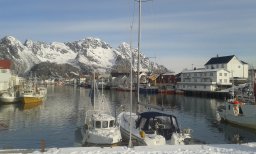Field Sites
![]()
Here we present the three places where we conduct our experimental and empirical field work.
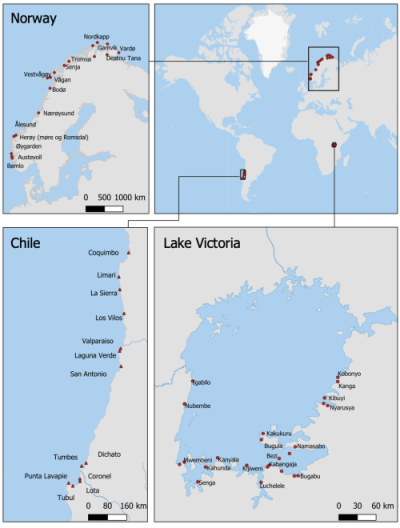
Lake Victoria, Tanzania
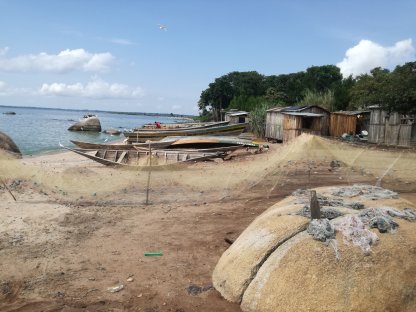
The Lake Victoria region of Tanzania plays a crucial role for the local and regional economy. The lake’s fisheries support, directly and indirectly, the livelihood and protein availability for more than 4 million people and its annual economic contribution to the region is estimated to be about 250 million Euro. The sustainability of the Lake Victoria fishery is threatened by climate change, pollution, population pressure, and overfishing.
The collective action problem of public good provision is particularly acute at Lake Victoria as laws and regulations set in place to protect the lake from being overfished are poorly monitored. Therefore, to reach sustainable outcomes, resource users have to rely on voluntary efforts and self-management.
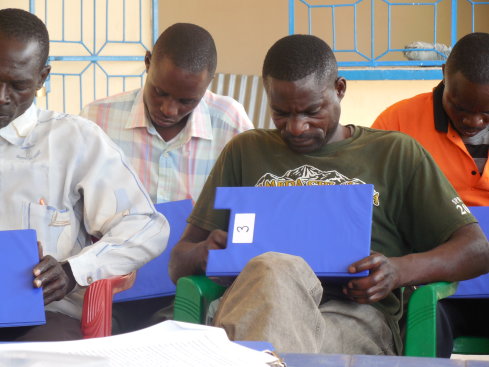
In order to study individual and communal drivers related to thresholds, risk preferences and social norms, the NATCOOP team visits fishing villages and landing sites along the Tanzanian coast of Lake Victoria. We conduct behavioral experiments and surveys with local fishermen to elicit their willingness to contribute to a shared public good, their conformity to perceived social norms, and their overall risk preferences. By studying a population that deals with the social dilemma of common pool resource extraction on a daily basis, we hope to identify relevant drivers facilitating the sustainable use of the resources offered by the lake.
Our project combines scientific experiments with communal interaction to understand possible starting points for policy interventions. With the help of the Tanzanian Fisheries Research Institute and the University of Dar es Salaam, NATCOOP members interview elected officials of existing co-management institutions (“beach management units”) at every landing site that is visited. In combination with the data collected in experiments, we aim to better understand the common pool resource management at Lake Victoria, Tanzania.
Chile
The coastal waters of Chile are host to a productive and diverse ecosystem. The upwelling caused by the Humbolt current brings nutrient rich waters to the surface. This nutrient availability allows for rapid plankton growth, which serves as the primary source of food for many marketable fish species. The productivity of this ecosystem supports Chile’s status as a top ten exporter of fish and fish products. However due to natural variability and over exploitation, the total catches have decreased sharply over the last 10 years.
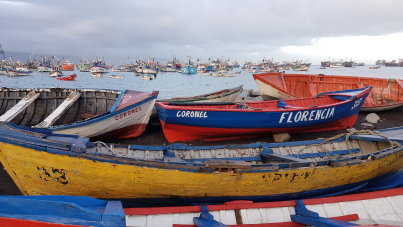 Artisanal fishers do the majority of fishing in Chile. In an effort to increase resource sustainability, artisanal fishers have been granted exclusive fishing rights and territorial use rights. The Chilean government distributes these fishing rights to small-scale fisheries organizations, which are founded and managed by the artisanal fishers. The organizations are responsible for the sustainable exploitation of their resources. However, cooperation between fishers within these organizations is necessary to manage these new fishing opportunities successfully.
Artisanal fishers do the majority of fishing in Chile. In an effort to increase resource sustainability, artisanal fishers have been granted exclusive fishing rights and territorial use rights. The Chilean government distributes these fishing rights to small-scale fisheries organizations, which are founded and managed by the artisanal fishers. The organizations are responsible for the sustainable exploitation of their resources. However, cooperation between fishers within these organizations is necessary to manage these new fishing opportunities successfully.
We use the diversity of Chilean fishers to investigate how resource variability affects cooperation and risk preference.
 In cooperation with the Pontifical Catholic University of Valparaiso, we have conducted a series of workshops with fisheries organizations that have specific target resources. During these visits, we conduct lab-in-the-field experiments and measure the risk and cooperative preferences of the fishers. We then determine the variability of their target resources to test if exposure to high levels of risk reduces risk aversion over time and whether periods of scarcity can threaten or strengthen cooperation.
In cooperation with the Pontifical Catholic University of Valparaiso, we have conducted a series of workshops with fisheries organizations that have specific target resources. During these visits, we conduct lab-in-the-field experiments and measure the risk and cooperative preferences of the fishers. We then determine the variability of their target resources to test if exposure to high levels of risk reduces risk aversion over time and whether periods of scarcity can threaten or strengthen cooperation.
Norway
Norwegian fisheries are among the most valuable fisheries in the world. Annually, about 2.5 million tons of fish, equivalent to a value of 2 billion Euros, are harvested from a largely industrialized, highly modern, fleet. Two dominant groups can be distinguished: Those boats that harvest pelagic species such as Herring and Mackerel, and those that harvest demersal species such as cod and haddock. Especially the latter fleet consists to a large part of relatively small vessels that fish close to the coast.
In the NATCOOP project, we elicit risk preferences using an online survey. Moreover, we work closely with biologists at the CEES, Department of Biosciences, University of Oslo to answer interdisciplinary questions on the relationship between the natural environment and the social environment. Importantly, the Norwegian case contrasts with Chile and Tanzania in terms of institutional set-up and the efficiency with which formal rules and regulations are implemented and enforced. Given the excellent availability of data from biological aspects and fishing activities, including profitability surveys, as well as the biological expertise in Oslo, the Norwegian case allows us to use empirical methods and study aspects that complement what we can learn from the other field sites. For example, using the landing tickets in combination with oceanographic models, we plan to investigate whether fishing effort has shifted with the fish stock under climate change. As the fish stock becomes more or less available, do we observe signs of more or less cooperative behavior among fishermen?
